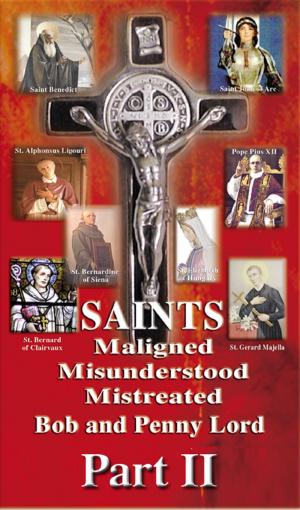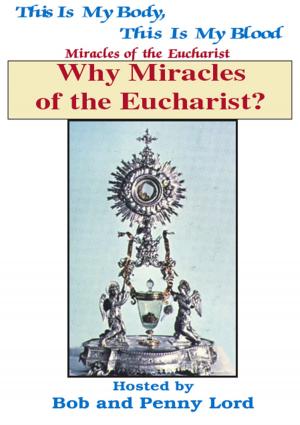The Shroud of Turin
Nonfiction, Religion & Spirituality, Christianity, Denominations, Catholic, Catholicism| Author: | Penny Lord, Bob Lord | ISBN: | 9781458019424 |
| Publisher: | Journeys of Faith | Publication: | April 5, 2011 |
| Imprint: | Smashwords Edition | Language: | English |
| Author: | Penny Lord, Bob Lord |
| ISBN: | 9781458019424 |
| Publisher: | Journeys of Faith |
| Publication: | April 5, 2011 |
| Imprint: | Smashwords Edition |
| Language: | English |
This was the cloth which held the Body of Jesus. At a minimum, it would be considered a relic of the Savior. At most, it was a precious keepsake of the death and resurrection of Jesus. And probably, when Jesus left us after 40 days, this cloth was one of the few mementos they had of the physical presence of Jesus among them.
What happened to it next? The answers to this question are documented in part. One of the gaps was officially filled in just this year. But there are areas where we have to employ “What if”, and “Why not”. Another question we’re not sure how to answer is when did the image of His Face, and then His whole Body, become visible for all to see? Let’s begin with tradition. St. Jude Thaddeus was the cousin of Jesus. He is known to have evangelized the area around Turkey. He is also the only one of the apostles, who wore a large medal around his neck, with the Image of Jesus on it. There is a tradition that has to do with the emir of Edessa in Turkey, Abgar who lived during the time of Jesus. Abgar was a leper, and he had heard about Jesus and His healing power. He wrote to Jesus, asking Him to come to Edessa and cure Abgar. Jesus responded that He could not come, but would send one of His disciples, who would heal Abgar.
Jesus died, and tradition has it that His cousin, Jude Thaddeus took on the task of going to Edessa to fulfill the request of Abgar for a healing, and also to evangelize the area. Tradition also has it that he brought with him a cloth handkerchief which had on it a faint image of Jesus; similar to the medal Jude Thaddeus wore around his neck. When Abgar saw the image of Jesus, he was immediately healed and converted to Christianity. In addition, he also had his emirate converted to Christianity.
This was the cloth which held the Body of Jesus. At a minimum, it would be considered a relic of the Savior. At most, it was a precious keepsake of the death and resurrection of Jesus. And probably, when Jesus left us after 40 days, this cloth was one of the few mementos they had of the physical presence of Jesus among them.
What happened to it next? The answers to this question are documented in part. One of the gaps was officially filled in just this year. But there are areas where we have to employ “What if”, and “Why not”. Another question we’re not sure how to answer is when did the image of His Face, and then His whole Body, become visible for all to see? Let’s begin with tradition. St. Jude Thaddeus was the cousin of Jesus. He is known to have evangelized the area around Turkey. He is also the only one of the apostles, who wore a large medal around his neck, with the Image of Jesus on it. There is a tradition that has to do with the emir of Edessa in Turkey, Abgar who lived during the time of Jesus. Abgar was a leper, and he had heard about Jesus and His healing power. He wrote to Jesus, asking Him to come to Edessa and cure Abgar. Jesus responded that He could not come, but would send one of His disciples, who would heal Abgar.
Jesus died, and tradition has it that His cousin, Jude Thaddeus took on the task of going to Edessa to fulfill the request of Abgar for a healing, and also to evangelize the area. Tradition also has it that he brought with him a cloth handkerchief which had on it a faint image of Jesus; similar to the medal Jude Thaddeus wore around his neck. When Abgar saw the image of Jesus, he was immediately healed and converted to Christianity. In addition, he also had his emirate converted to Christianity.















